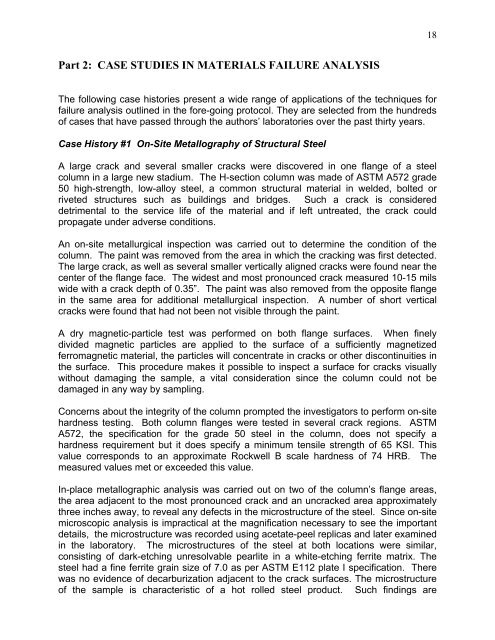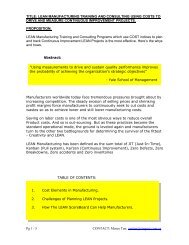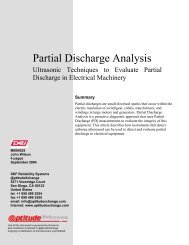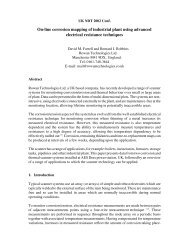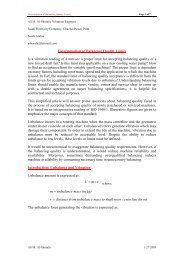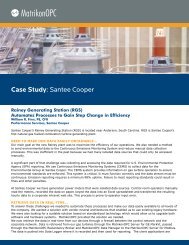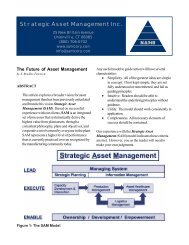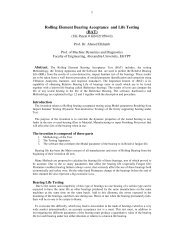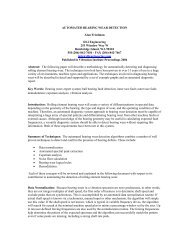A Re-Examination of Failure Analysis and Root Cause Determination
A Re-Examination of Failure Analysis and Root Cause Determination
A Re-Examination of Failure Analysis and Root Cause Determination
- No tags were found...
You also want an ePaper? Increase the reach of your titles
YUMPU automatically turns print PDFs into web optimized ePapers that Google loves.
18Part 2: CASE STUDIES IN MATERIALS FAILURE ANALYSISThe following case histories present a wide range <strong>of</strong> applications <strong>of</strong> the techniques forfailure analysis outlined in the fore-going protocol. They are selected from the hundreds<strong>of</strong> cases that have passed through the authors’ laboratories over the past thirty years.Case History #1 On-Site Metallography <strong>of</strong> Structural SteelA large crack <strong>and</strong> several smaller cracks were discovered in one flange <strong>of</strong> a steelcolumn in a large new stadium. The H-section column was made <strong>of</strong> ASTM A572 grade50 high-strength, low-alloy steel, a common structural material in welded, bolted orriveted structures such as buildings <strong>and</strong> bridges. Such a crack is considereddetrimental to the service life <strong>of</strong> the material <strong>and</strong> if left untreated, the crack couldpropagate under adverse conditions.An on-site metallurgical inspection was carried out to determine the condition <strong>of</strong> thecolumn. The paint was removed from the area in which the cracking was first detected.The large crack, as well as several smaller vertically aligned cracks were found near thecenter <strong>of</strong> the flange face. The widest <strong>and</strong> most pronounced crack measured 10-15 milswide with a crack depth <strong>of</strong> 0.35”. The paint was also removed from the opposite flangein the same area for additional metallurgical inspection. A number <strong>of</strong> short verticalcracks were found that had not been not visible through the paint.A dry magnetic-particle test was performed on both flange surfaces. When finelydivided magnetic particles are applied to the surface <strong>of</strong> a sufficiently magnetizedferromagnetic material, the particles will concentrate in cracks or other discontinuities inthe surface. This procedure makes it possible to inspect a surface for cracks visuallywithout damaging the sample, a vital consideration since the column could not bedamaged in any way by sampling.Concerns about the integrity <strong>of</strong> the column prompted the investigators to perform on-sitehardness testing. Both column flanges were tested in several crack regions. ASTMA572, the specification for the grade 50 steel in the column, does not specify ahardness requirement but it does specify a minimum tensile strength <strong>of</strong> 65 KSI. Thisvalue corresponds to an approximate Rockwell B scale hardness <strong>of</strong> 74 HRB. Themeasured values met or exceeded this value.In-place metallographic analysis was carried out on two <strong>of</strong> the column’s flange areas,the area adjacent to the most pronounced crack <strong>and</strong> an uncracked area approximatelythree inches away, to reveal any defects in the microstructure <strong>of</strong> the steel. Since on-sitemicroscopic analysis is impractical at the magnification necessary to see the importantdetails, the microstructure was recorded using acetate-peel replicas <strong>and</strong> later examinedin the laboratory. The microstructures <strong>of</strong> the steel at both locations were similar,consisting <strong>of</strong> dark-etching unresolvable pearlite in a white-etching ferrite matrix. Thesteel had a fine ferrite grain size <strong>of</strong> 7.0 as per ASTM E112 plate I specification. Therewas no evidence <strong>of</strong> decarburization adjacent to the crack surfaces. The microstructure<strong>of</strong> the sample is characteristic <strong>of</strong> a hot rolled steel product. Such findings are


